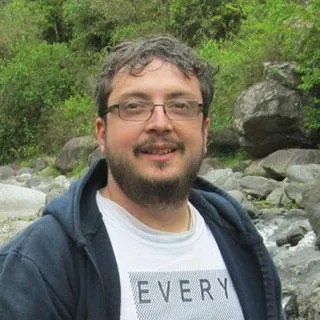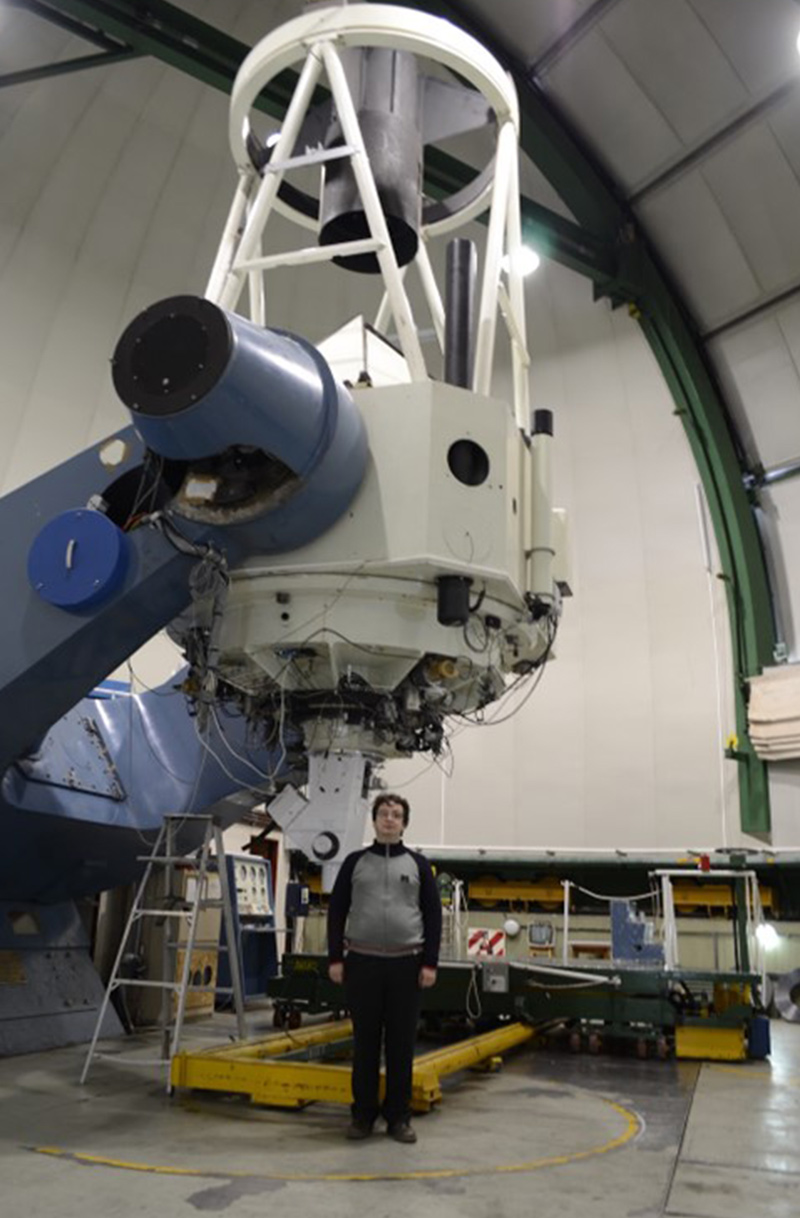
Hugo Andrés Durantini Luca
NASA Citizen Scientist
Centro Educativo Cristo Rey, Córdoba, Argentina
Facultad de Matemática, Astronomía, Física y Computación (FAMAF), Universidad Nacional de Córdoba, Córdoba
Observatorio Astronómico de Córdoba (OAC), Córdoba
Instituto de Astronomía Teórica y Experimental (IATE), Córdoba
I have liked science, especially astronomy, since I was a kid. Citizen science has given me the opportunity to work with real data and contribute to the advancement of the field while learning and having fun at the same time. Also, it gives me the chance to know and work alongside people from all around the world – professional and citizen scientists alike – in what has proven to be a wonderful community. Citizen science also puts within your reach that sensation of awe when you discover something that can lead to a real impact, however small, for the project on which you are helping.
I saw an announcement on Twitter about the launch of Disk Detective. Since finding planets is an interest of mine, I jumped on board.
I started like any other newcomer, just learning what the project goals were and learning the first basics things about what the Wide-field Infrared Survey Explorer (WISE) mission was, etc. I got hooked by the easy and quick tools to analyze images, but I wanted to learn more. Luckily for me, a few users were already talking with the science team and forming a Google user group, and the rest is history! If you want to travel in time and see how the project site was and how it worked back in the day, you can visit this video I recorded in 2015.
Disk Detective has become my main project due to a few factors: the amazing workgroup on the project itself and our level of familiarity with what we are studying; the wide sample of stellar phenomena we find while we hunt for disks around stars – from infrared (IR) excess to variability and stellar flares; and the particular way the project has impacted my personal life, opening a path for me to study and work on astronomy projects in my country of Argentina until the pandemic started.
I´m also working on Planet Patrol. That project involves visually inspecting images and light curves corresponding to thousands of Transiting Exoplanet Survey Satellite (TESS) planet candidates to weed out images that are contaminated by instruments and astrophysical artifacts (for example, stellar processes like variability that could give a false transit reading). On April 1 of 2022, the preprint of our first paper was shared with the public and broad astronomical community! And we are really close to sharing a second. We are also getting ready for a relaunch of the project in Zooniverse.
In Backyard Worlds: Planet 9 I was part of the team behind the paper called “Spitzer Follow-up of Extremely Cold Brown Dwarfs Discovered by the Backyard Worlds: Planet 9 Citizen Science Project,” which was published in The Astrophysical Journal in 2020. With Planet Patrol, I was part of the team behind “The TESS Triple-9 Catalog: 999 uniformly vetted candidate exoplanets” (the preprint is available here.) We have a second paper coming soon.
With Disk Detective, I’ve been part of six papers to date. They are all listed on the Publications by NASA Citizen Scientists page and my ORCID profile.
Beyond mastering the basics of the software tools for analyzing Disk Detective data, I’ve been able to use my IT knowledge to help do things like organizing spreadsheets and recording and archiving the science team’s conference calls. I make comments and suggestions on manuscripts along with the other users. And in the case of our paper “Follow-up Imaging of Disk Candidates from the Disk Detective Citizen Science Project: New Discoveries and False Positives in WISE Circumstellar Disk Surveys,” I coordinated the task group that was in charge of analyzing the telescope images we used to verify candidate objects.
For another paper that is still in the works, the Disk Detective team needed a telescope in the southern hemisphere to verify some candidate objects. I was able to establish a relationship between the Observatorio Astronómico de Córdoba (OAC) and the Disk Detective project. The OAC team in turn connected us with the Complejo Astronómico El Leoncito (in English, it is known as the El Leoncito Astronomical Complex) in the western mountains of the San Juan Province of Argentina. I traveled 12 hours from central Argentina to CASLEO to make the observations we needed. This was the first time I used a telescope. It was one of the best experiences of my life. I returned on three occasions and look forward to going back one day. The paper with all that data will be published in 2022 – I will not give spoilers!

So, in summary, for any citizen scientist wondering how they can contribute to a project, that is going to depend a bit first on the scope of the project and the science team, but after that, the limit depends on how much you want to learn and get involved!
I am a computer technician. I have fixed computers since I was 14 years old. It’s a job that requires some patience to be done properly, and I think it's what has helped me develop the patience to work with large amounts of astronomical data, as we do in citizen science. Being very familiar with computers has also proven to be very useful in my scientific activities in general.
I was part of several local projects pre-pandemic. One was the TOROS (Transient Optical Robotic Observatory of the South) project, which would have performed an astronomical survey of the southern hemisphere sky in search of the transient optical signals associated with gravitational wave events. These short-lived phenomena are only detectable by telescopes and are valuable complements to the ground-based gravitational wave observations made by LIGO (Laser Interferometer Gravitational-Wave Observatory). The TOROS project was built using a telescope located in Cordon Macon, Tolar Grande, in the Salta province of Salta, Argentina. Sadly, that project was canceled just as it was nearing operational readiness thanks to factors like long quarantines.
My main interests are Japanese culture, restoring old computers, and PC gaming, with most games centered around the science fiction theme regardless of the game genre, thanks to the influence of “Star Trek.” My all-time favorite game franchise is Mass Effect.
Restoring old computers now occupies more of my time. I started tinkering with a couple of old computers to keep my sanity during long quarantines. I was motivated by the idea of helping to conserve a part of history by restoring old computers and data that could be lost. The oldest computer that I have been able to restore so far is an NEC V20 Turbo XT (Intel 8088 clone) from 1988. It now lives in a museum in the province of Mendoza, which feels amazing. I’ve met an incredible community of enthusiasts from all over the world focused on computer restoration.
Aside from discovering several disk candidates, I think my most interesting discoveries with Disk Detective are the "Peter Pan Disks," which are long-lived debris disks around young M stars that make them look like they refuse to grow up. Also, being able to detect true or false-positive transits in TESS data with Planet Patrol is really interesting – there is a lot of cross-checking you have to do to be really sure in some cases.
Regarding learning and experiences, it's hard to summarize all that citizen science has given me. Being a citizen scientist has enabled me to learn a lot about astronomy that I would not otherwise have been able to learn.
I have also learned how to work on teams to make science papers. My current outlook on the astronomy world has its roots – without a doubt – in being a NASA citizen scientist.
My first inspiration regarding science and space was Carl Sagan. I remember reading an article about him in Enciclopedia Popular Magazine – that planted the seed. Later, I came in contact with his "Cosmos" work and his novel "Contact," which further cemented my interest. It's also worth mentioning that “Star Trek” added the spice of imagination to that mix, in particular “Star Trek: The Next Generation” – that was the first series of the franchise that I watched as a kid.
Be patient in learning the intricacies of the projects that most interest you. Be open to learning from others and teaching others to push the projects forward. And don't be afraid to present your own ideas – you may be surprised by the reception and impact that even something little can have.
People like the late Carl Sagan and Stephen Hawking, as well as Neil deGrasse Tyson and the British physicist Brian Cox, to name a few famous figures, but I also need to recognize the inspiration that I draw from my colleagues in citizen science.
Have you been part of a peer-reviewed publication from a NASA citizen science project? If so, we'd love to share your profile! Get started here.
Visit the complete collection of NASA citizen science projects and start contributing today!
Planetary science is a global profession.

